TAGS: Marble, Sandstone, Terrazzo, Marbleflooring, Sandstoneflooring, Terrazzoflooring
MARBLE FLOORING
- The Geology of Marble
- Cost
- Maintenance and Repair
- Design
- Installation
- Top Brands of Marble Flooring
- Comfort and Convenience.
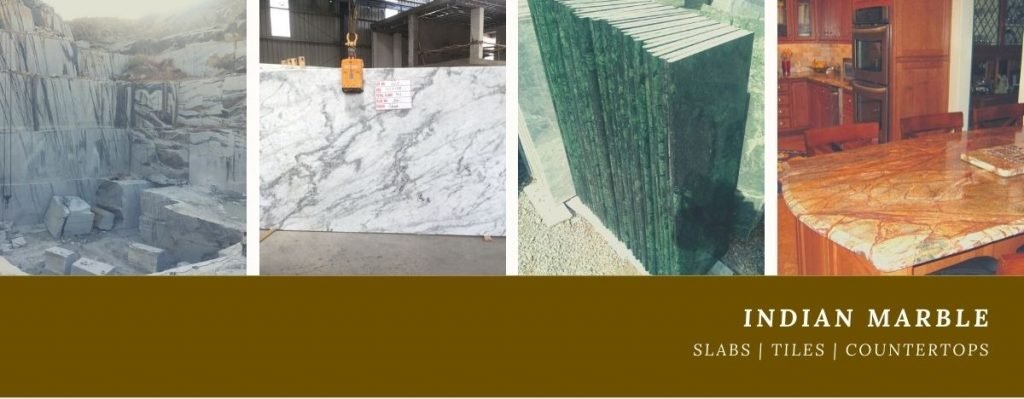
Is Marble Flooring Right for You?
Marble, quarried in mountainous regions around the world, has been a very popular building material.
Pros
- Elegant, upscale appearance
- Natural material
- Easily polished
- Accommodates radiant floor heating
- Adds real estate value
Cons
- Porous stone requires sealing
- Scratches, stains easily
- Expensive
- Slippery and brittle
- Cold underfoot
The Geology of Marble
Marble is sometimes confused with granite, however, granite is an igneous rock derived from volcanic magma, not layered sedimentary rock. Granite typically has a pebbly or spotted color pattern, while marble usually has a wavy veined pattern.
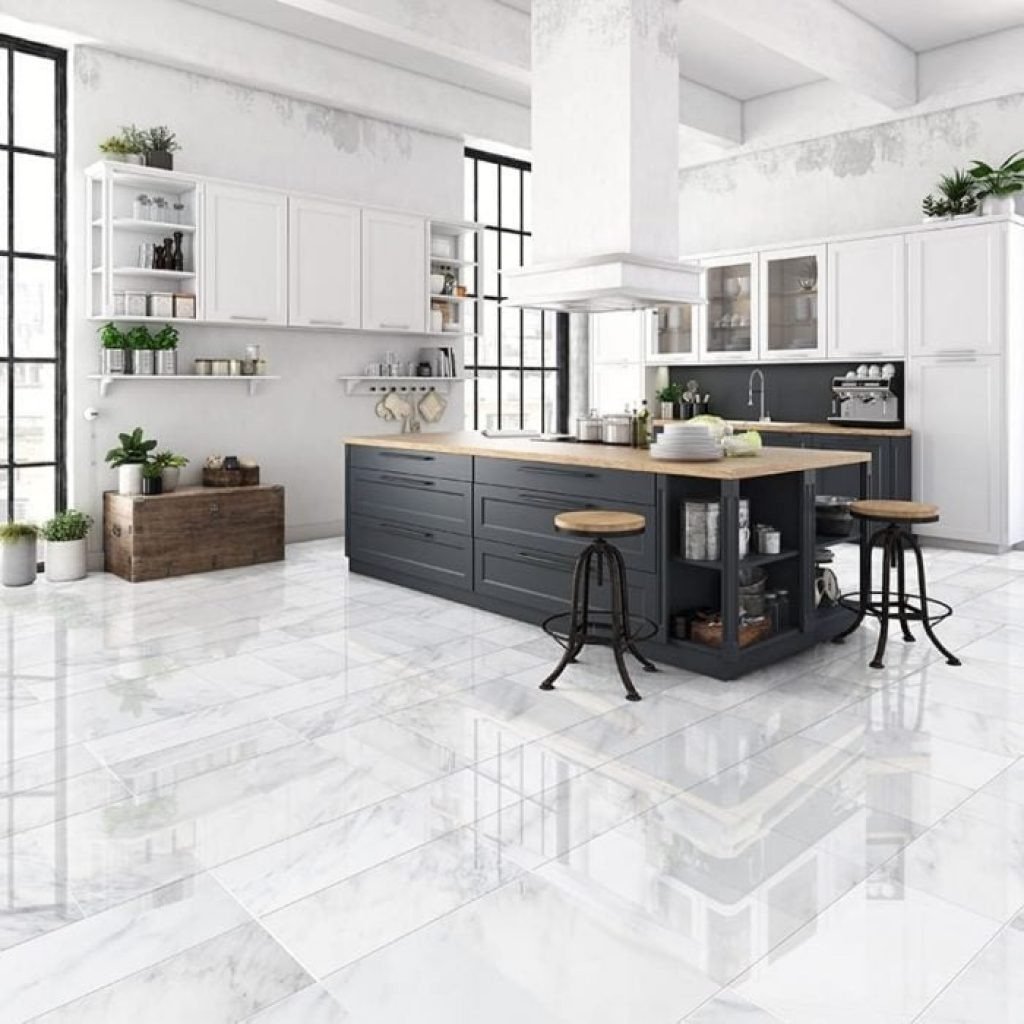
Marble Flooring Cost
Marble floors typically cost $10 to $20 per sq foot or materials alone, with some specialty marble running as high as $40 per square foot. Ceramic tile is typically about half the cost of marble, although the cost of installation labor is fairly comparable. National statistics show that professional installation labor adds $3 to $7 per square foot. The installation will cost more for jobs requiring complicated layouts or lots of cutting; the labor cost is lower if the layout involves a simple layout of square or rectangular tiles.
Maintenance and Repair
However, unlike ceramic tile, marble is fairly porous, so you shouldn’t allow water to puddle and stand on the surface. This means that it can have a chemical reaction whenever it comes in contact with acidic substances. This can include a wide variety of foods, sauces, beverages, and cleaning products. Unfortunately, the discoloration stains that come from these materials are usually permanent.
Design
In the case of multicolor marble, this uniqueness can be quite pronounce, with distinct features blaring forth from every tile. This look of sophistication and glamor evokes the highest sense of elegance in a space.
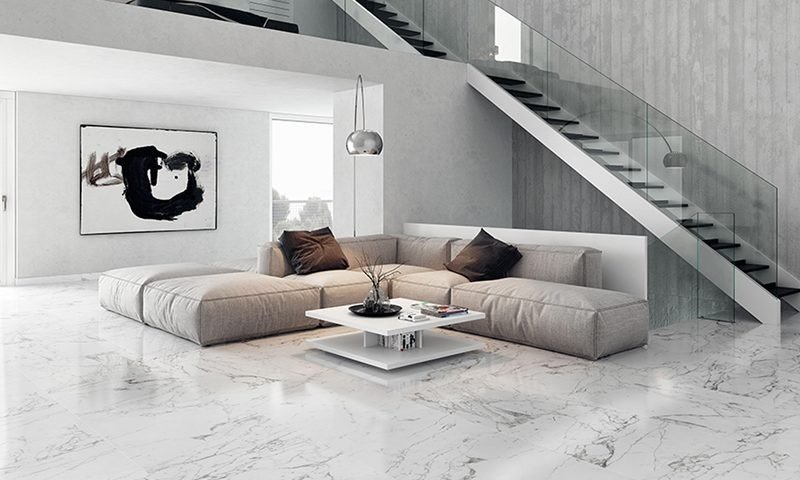
Marble Flooring Installation
Marble tile is installed in much the same way as ceramic or any other natural stone tile. After the adhesive dries, the joints between the tiles are filled with a cementitious grout.
Top Brands of Marble Flooring
More important than the commercial brand of the company is the type of marble you are buying. Here are some of the better-known types of marble use in residential settings:
- Carrara marble: This is the most common type of marble, quarried in the Carrara region of Italy. In color, it is grayish-white with soft, feathery gray veining. It is by far the most common type use in flooring applications since it is fairly economical.
- Calacatta marble: This marble falls at the other end of the spectrum, as the most luxurious and expensive, thanks to its rarity. Although it is similar in appearance to Carrara marble, it has much darker, thick veining patterns over a bright white background. There is also a variation with very beautiful gold hues in the veining. Calacatta marble comes from specific quarries in the Carrara region of Italy.
- Statuary (statuario) marble: This is also similar in appearance to Carrara, but it has a more translucent white background and more dramatic veining, which gives it a more luxurious feeling.
- Emperador marble: This type is quarried in Spain, and comes in various shades of brown, with irregular veining.
- Crema Marfil marble: Also from Spain, crema Marfil comes in many color variations, with the most common being beige or yellowish with veining that varies in intensity.
- Talathello marble: Sometimes called silver beige marble, this variety quarried in Turkey has a light grey background with irregular vein speckles of silver or beige.
- Levadia black marble: This is a very striking black marble from Greece, with smoke-like light gray veining. It is not often use for floors but makes a very striking statement when it is.

Comfort and Convenience
When polished, marble can be a dangerously slick and slippery surface. In kitchens and bathrooms where water is likely, this can be a problem, since these floors are unforgiving on bones and joints in the event of a fall. Use non-slip rugs in these areas if you are using highly polished marble, or opt for less polished forms of marble tile. ceramic tile, including marble, is notoriously cold underfoot. But like other hard flooring materials, marble also makes a very good base for radiant floor heating systems, in which hydronic tubing or electrical wiring is the work through the underlayment.
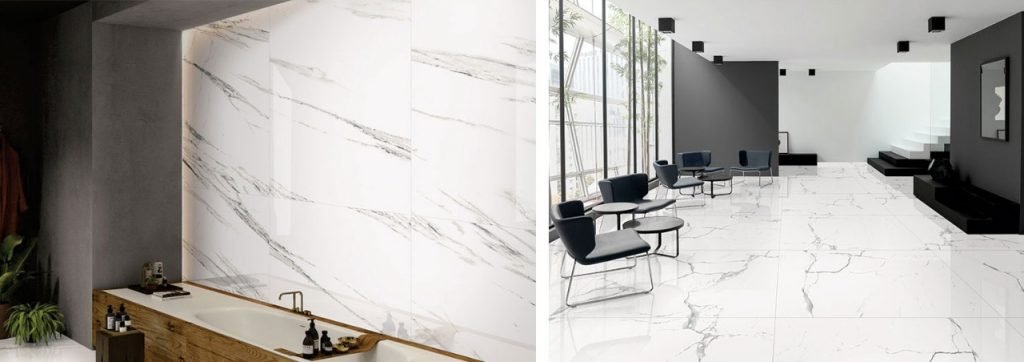
SANDSTONE FLOORING
- It’s easy to point out the benefits of sandstone flooring, but seeing a nice sandstone tile installation in person says it all.
- Natural beauty: There is an ineffable quality to natural materials that is obvious in sandstone flooring. Ranging in color from medium tone whites to multicolored maelstroms and all the way back to charcoal and black, sandstone can cover vast stretches of hues, and yet it always has a feeling of earth and rock that can be missing in many of its imitators.
- Durability: Sandstone can’t match slate or granite for durability, but it is strong enough to last for decades if properly care for.
- Uniqueness: Because sandstone is formed from nature itself, the colors, patterns, and hues found in any individual piece are completely unique and different. When sandstone is quarried, it comes out in giant slabs, which are then processed and cut into smaller pieces. That means that every piece of tile in every sandstone floor is one random sample of a great masterpiece of mountainous nature that stretches across the world.
- Texture: Sandstone, being a rock, comes from the mountain naturally craggy and jagged. In flooring tiles, this is leveled out in a process called “gauging.” This gives you many options with sandstone flooring, as this process can be increased to hone the tiles into smooth surfaces or even polish them flat and glistening.
- Replaceable: Because sandstone flooring is installed in individual tiles or pieces, the tiles can be removed and replaced with relative ease. You just have to make sure that you save a few tiles from the original installation so that they match the repaired floor.
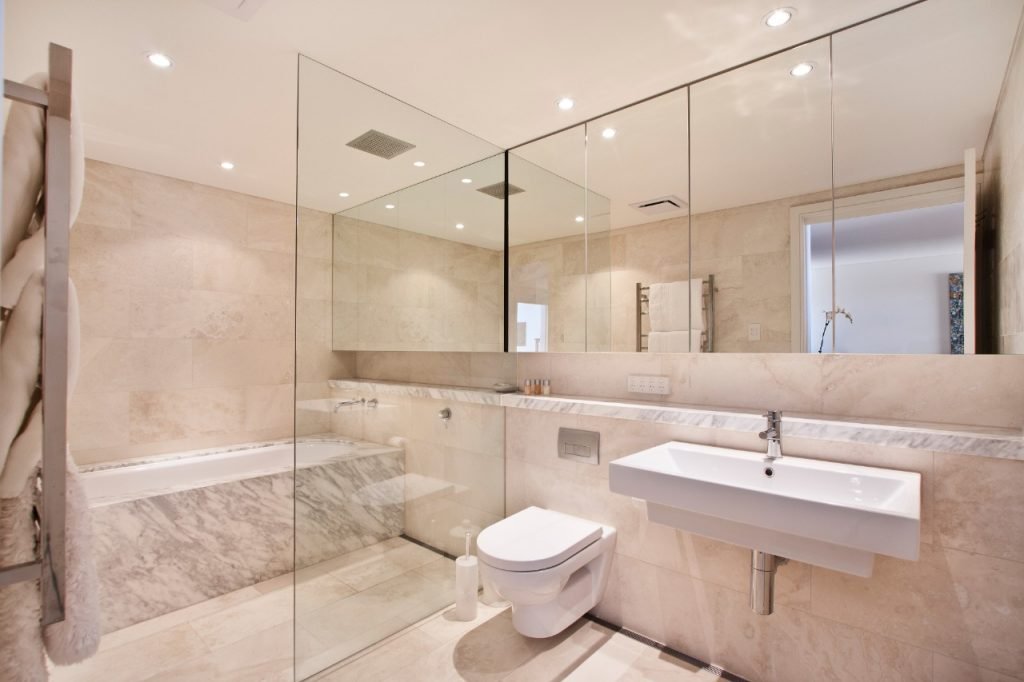
Sandstone Flooring Cons
The drawbacks of sandstone should be familiar to anyone considering natural stone flooring. On top of that, sandstone is relatively soft and porous, making it a bit more tricky to use than some other stone flooring materials.
- Water absorption: Sandstone flooring is known for being a relatively porous material, even among natural stone surface coverings. It can have an absorption rate of between 1 and 6 percent, which leaves it vulnerable to damage from liquid stains, mold, micro-bacteria, and even warping in extreme cases. For this reason, it is generally not used in bathrooms, kitchens, below-grade rooms, or exterior locations.
- Scratches: Sandstone flooring is a rock, but it’s a relatively soft rock. That means that it is subject to scratches and dents over time from claws, high heels, and accidents that send things crashing into the floor.
- Slippery when wet: There are different finishes that you can get when purchasing sandstone flooring tiles. Honed tile is perfectly flat, and while it has some traction, it can be slippery when it gets wet. If the material is appropriate for polishing, then polished sandstone can be a particularly dangerous slipping hazard, especially in areas where water may be present.
- Staining: The high absorption rate of sandstone means that colored liquids can penetrate down into the material. If they are not caught early enough, these can cause permanent stains deep into the material. Like other natural stones, sandstone is alkaline and can be damaged by acidic cleaners, although this problem is easy to avoid.
- Weathering with age: The way a sandstone floor looks when it is installed will not be the way that it will look 10 years down the line, even with perfect maintenance. The material is just too soft, and foot traffic, general wear and tear, and atmospheric exposure will take their toll, causing the different tiles to discolor. However, not everyone considers this a drawback. The personality that a sandstone floor can take on over the years may be considered part of its beauty. In any case, it’s important to know how the floor will evolve over time.

TERRAZZO TILE FLOORING
Necessity, it’s said, is the mother of invention. Lovely to look at, but essentially leftovers, an inspired idea was born. Why not use the marble remnants to build terraces that would bring added luxury to their own working-class homes?
The end result was an even surface that was comfortable to walk on. Terrazzo was born!
Papal coat of arms of Pope John Paul II
While it wasn’t until the early 1900s that terrazzo began to gain a foothold in the United States, one of the first examples of its use can be found in the home of America’s first president. George Washington’s beloved Mount Vernon began as a small farmhouse but was later enlarged into a 21-room mansion that featured terrazzo as his flooring of choice. Given that Washington was 6 foot 2, weighed over 200 pounds, and wore what would be in today’s measurements size 13 shoes, we think it is only fitting he would choose such a durable surface to walk upon.
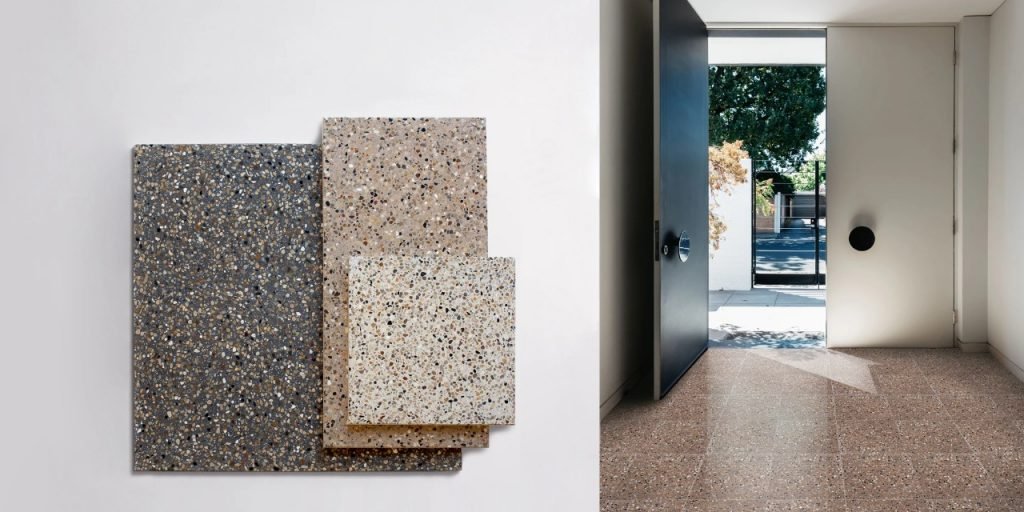
Mount Vernon Estate Mansion
there are still many buildings that showcase terrazzo, thanks to the immense popularity it began to enjoy post World War I. Due in part to the invention of an electric grinder that allowed for finer finishes, greater speeds and lower costs, the availability of brass divider strips took terrazzo to a higher level as it allowed for the cr ation of highly artistic and intricate patterns. Architects soon began jumping on the terrazzo bandwagon as they realized it as the ideal medium for their smooth curvilinear Art-Deco designs of the 1920s.
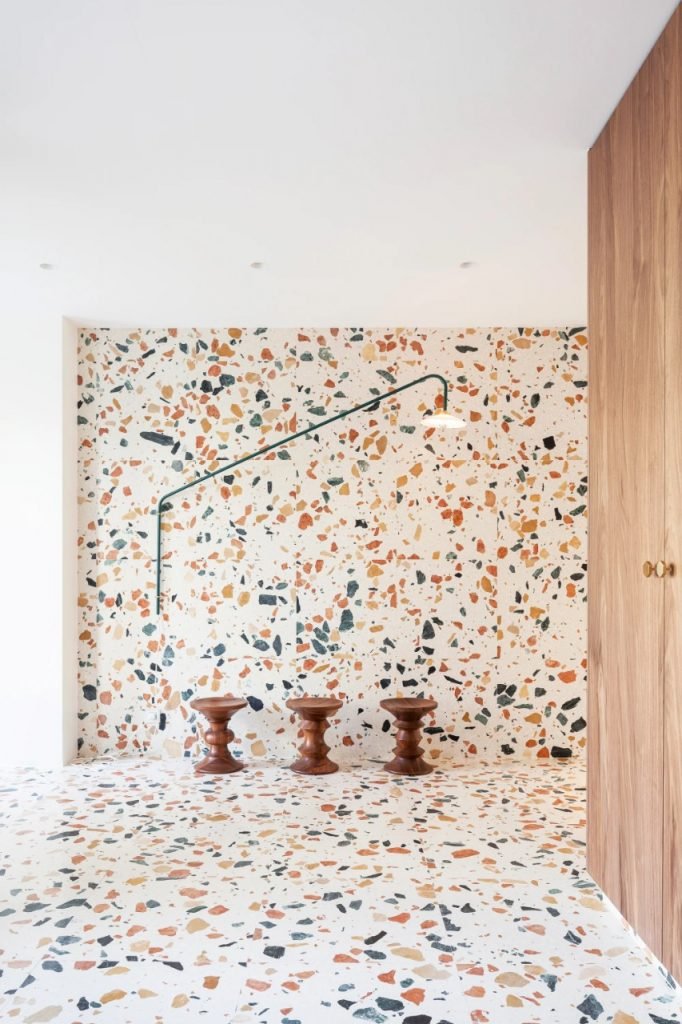
Today, stunning examples of terrazzo can be found in the Frank Lloyd Wright-designed Guggenheim Museum and Radio City Music Hall in New York. The pristine terrazzo at the Colony Theater in Miami Beach features bold lines and geometric patterns, while the creative folks at Disney have embraced terrazzo for bright and colorful displays at Disney theme parks in the United States and around the world. If you are a sports fan, you’ll find many arenas and stadiums featuring emblems, crests, and mascots of teams immortalized in terrazzo. We would also be remiss if we didn’t mention that The Hollywood Walk of Fame is 18 wonderful blocks of terrazzo underfoot. Imagine all the celebrities and fans who have walked over this magnificent monument in the past, and thanks to the durability of terrazzo, will continue to walk over it for many years to come.
Long valued for its life cycle characteristics: low maintenance, durability, and indoor air quality learn more about our line of beautiful, sustainable terrazzo products.
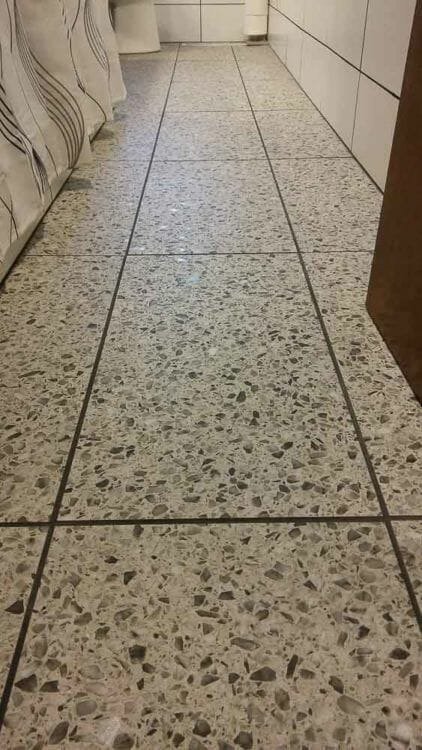
INDIA’S TOP AND WORLD’S BEST MARBLE, GRANITE AND STONE COMPANY.
CATEGORIES; MARBLE FLOORING, SANDSTONEFLOORING, TERRAZZO TILE FLOORING.
ADD BY EXPERT AND EXPORT TEAM OF BHANDARI MARBLE GROUP. CONTACT US ON; 9672941111.




